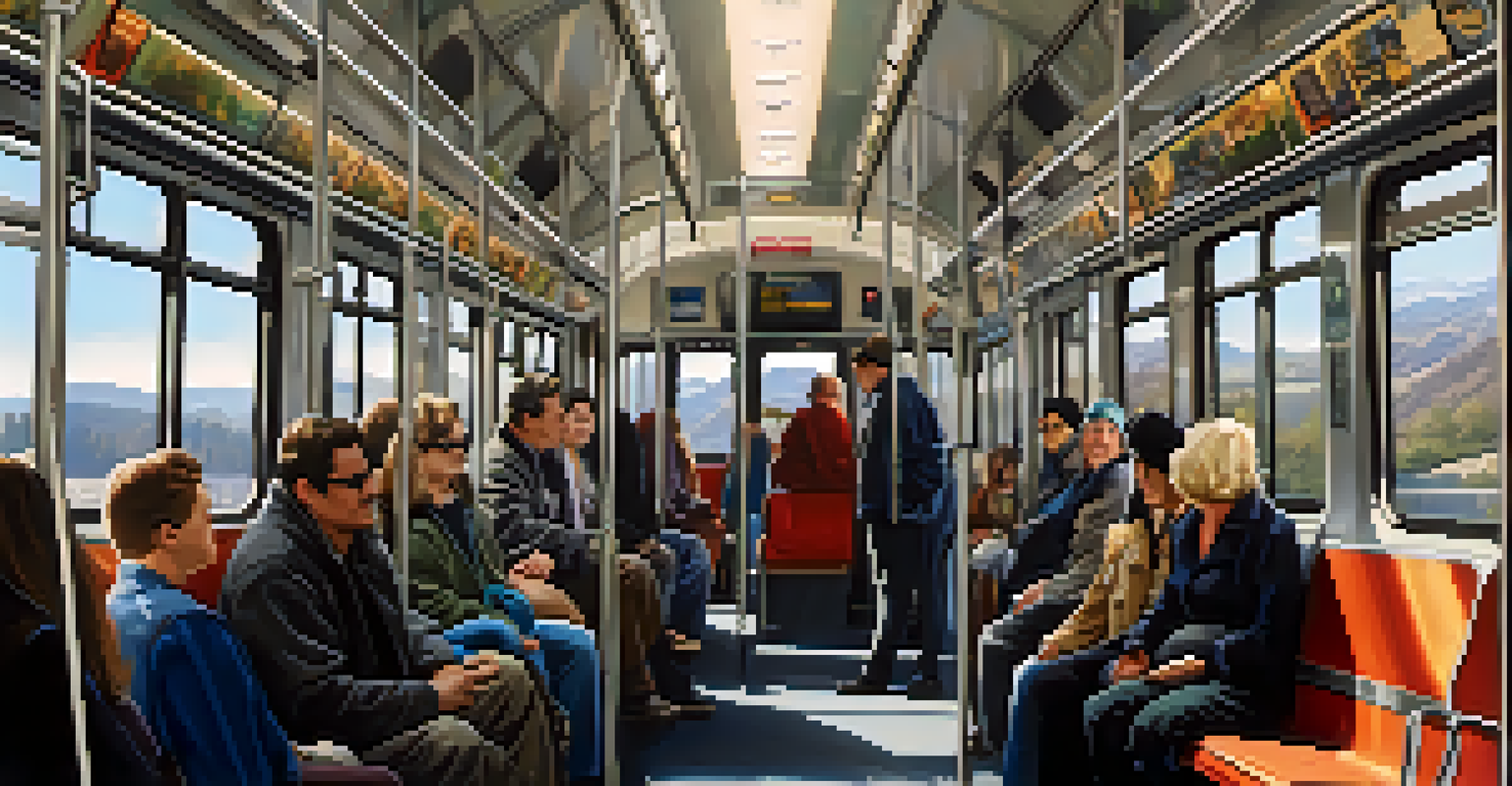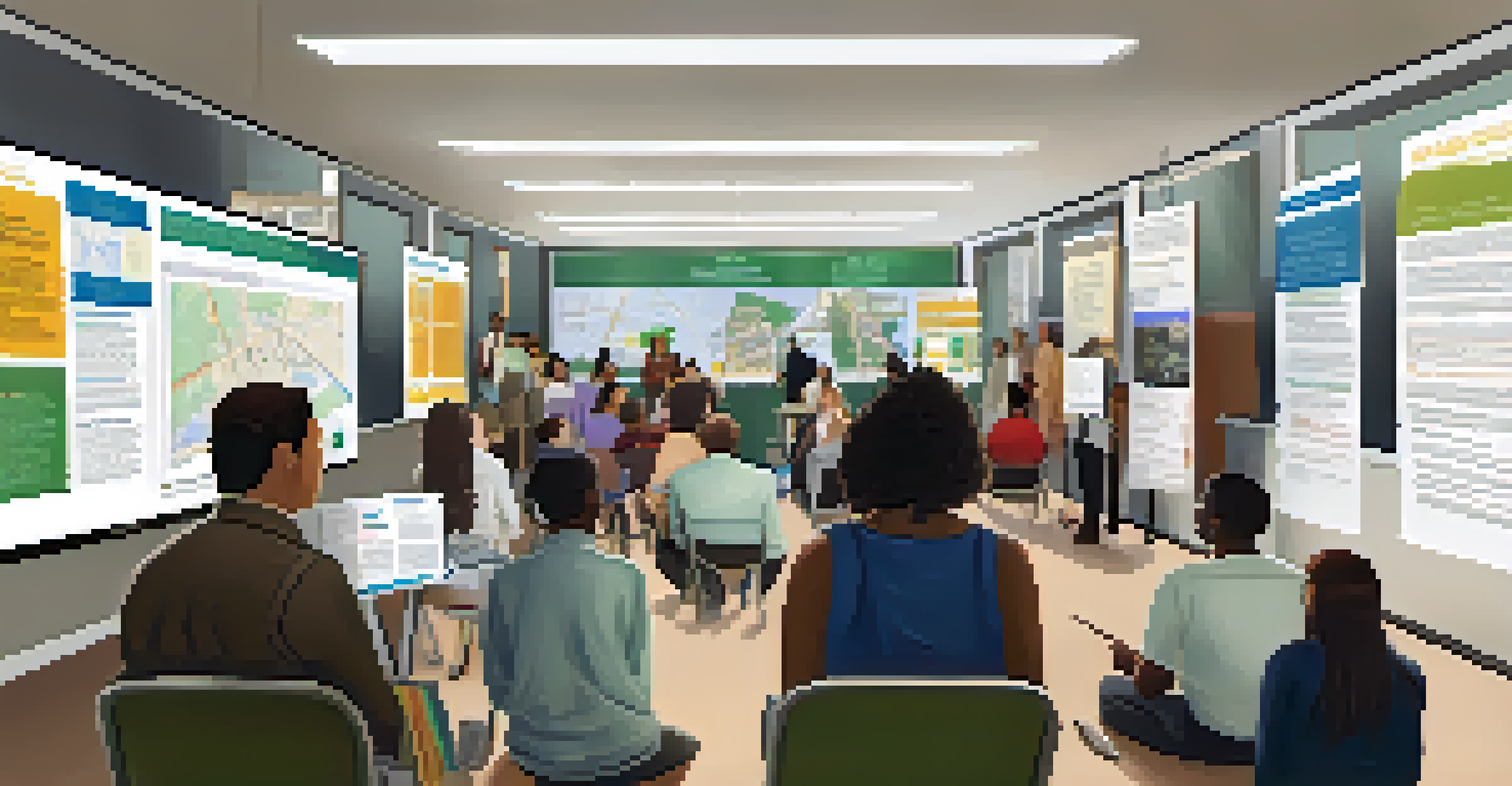Public Transit Accessibility: A Critical Look in California

Understanding Public Transit Accessibility in California
Public transit accessibility refers to how easily people can use transportation systems, particularly those with disabilities. In California, this concept is crucial, given the state's diverse population and urban sprawl. Many residents rely on public transport, making it essential for these systems to be inclusive and user-friendly.
Public transit is not just a means of transportation; it is a lifeline for individuals with disabilities, connecting them to essential services and opportunities.
Accessibility isn't just about physical barriers; it also encompasses information, affordability, and service frequency. For instance, it's not enough to have a ramp; transit schedules and signage must also cater to various needs. This multi-faceted approach helps ensure that everyone can navigate the transit system confidently.
As we delve deeper, we'll explore how California is addressing these challenges and what more can be done. With increasing awareness and advocacy, there's a growing push for improvements that can benefit all users, not just those with disabilities.
Current State of Accessibility Features in Transit Systems
California's public transit agencies have made strides in improving accessibility features, such as wheelchair ramps and designated seating. However, these efforts can vary significantly from one city to another. For example, while San Francisco's Muni system is often praised for its accessibility, other areas may lag behind in providing essential services.

In addition to physical features, technology plays a vital role in enhancing accessibility. Real-time tracking apps and audio announcements help passengers with visual impairments navigate routes more efficiently. Nevertheless, not every agency has adopted these technologies, highlighting a gap that needs addressing.
Accessibility is Multi-Faceted
Public transit accessibility in California involves not just physical features, but also information, affordability, and service frequency.
It's essential to recognize these disparities, as they can impact users' experiences. By understanding the current state, we can better advocate for improved standards across the board, ensuring that accessibility is a priority in all transit systems.
Challenges Faced by Disabled Commuters
Disabled commuters often encounter various challenges when using public transit in California. Beyond physical barriers, issues such as unreliable service and lack of awareness among staff can create significant hurdles. For instance, a bus that arrives late or doesn't stop at an accessible location can severely disrupt a disabled passenger's day.
Accessibility isn't just a feature; it’s a fundamental right that enables people with disabilities to participate fully in society.
Moreover, the perception of public transit as an inconvenient option can discourage many from even attempting to use it. This mindset can lead to isolation, further compounding the challenges faced by individuals with disabilities. It's crucial to address these perceptions through community outreach and education.
By shedding light on these challenges, we can foster a greater understanding of the needs of disabled commuters. This awareness can spark conversations that lead to actionable solutions, ultimately making public transit a viable option for everyone.
The Role of Legislation in Improving Accessibility
Legislation plays a pivotal role in shaping public transit accessibility in California. Laws like the Americans with Disabilities Act (ADA) set the standard for accessible transportation services, mandating that public systems be usable by all. California has also introduced state-specific regulations aimed at enhancing these efforts.
However, while legislation provides a framework, compliance and enforcement can be inconsistent. Some agencies may struggle to meet legal requirements due to budget constraints or lack of resources. This inconsistency can lead to a patchwork of accessibility levels across the state.
Legislation Needs Stronger Enforcement
While laws like the ADA set standards for accessibility, inconsistent compliance and enforcement across agencies hinder progress.
It's essential for advocacy groups to hold transit agencies accountable and ensure that they fulfill their obligations. By actively engaging with lawmakers and participating in public forums, individuals can help push for more robust policies that prioritize accessibility.
Community Involvement and Advocacy Efforts
Community involvement is vital in advocating for better public transit accessibility. Local organizations often work tirelessly to raise awareness about the needs of disabled passengers and push for improvements in transit systems. Their efforts can lead to significant changes, from enhanced services to more inclusive policies.
Advocacy efforts can take many forms, including public demonstrations, petitions, and partnerships with transit agencies. By collaborating with these agencies, communities can help bridge the gap between users and decision-makers. This collaboration fosters a sense of ownership and accountability in the improvement process.
The impact of community advocacy cannot be underestimated. When individuals band together to voice their concerns, they can create a powerful force that drives change, ultimately leading to a more accessible public transit system for all.
Case Studies: Success Stories in Accessibility
Examining successful case studies can provide valuable insights into effective accessibility practices in public transit. For example, the Los Angeles Metro has made significant strides by implementing a comprehensive accessibility plan that includes training for staff and improved vehicle designs. These efforts have led to increased ridership among disabled individuals.
Another inspiring example is the Bay Area Rapid Transit (BART) system, which has focused on enhancing its facilities and services for passengers with disabilities. Their initiatives, such as accessible elevators and real-time service updates, demonstrate a commitment to inclusivity that many other transit systems can learn from.
Community Advocacy Drives Change
Local organizations and community involvement play a crucial role in advocating for improved public transit accessibility for disabled individuals.
By highlighting these success stories, we can inspire other transit agencies to adopt similar measures. These case studies serve as reminders that progress is possible and that with concerted effort, public transit can become more accessible for everyone.
Future Directions for Public Transit Accessibility in California
Looking ahead, the future of public transit accessibility in California holds both challenges and opportunities. Emerging technologies, such as autonomous vehicles and enhanced mobile apps, have the potential to revolutionize how disabled individuals navigate transit systems. However, it's crucial to ensure that these technologies are developed with accessibility in mind from the start.
Moreover, ongoing funding and investment in public transit infrastructure are essential for maintaining and expanding accessibility features. Advocates must continue to push for increased budgets that prioritize these improvements, ensuring that all Californians can benefit from public transportation.

Ultimately, the path forward requires collaboration between government agencies, transit authorities, and community organizations. By working together, we can create a more inclusive and accessible public transit system that meets the needs of all users, paving the way for a brighter future.